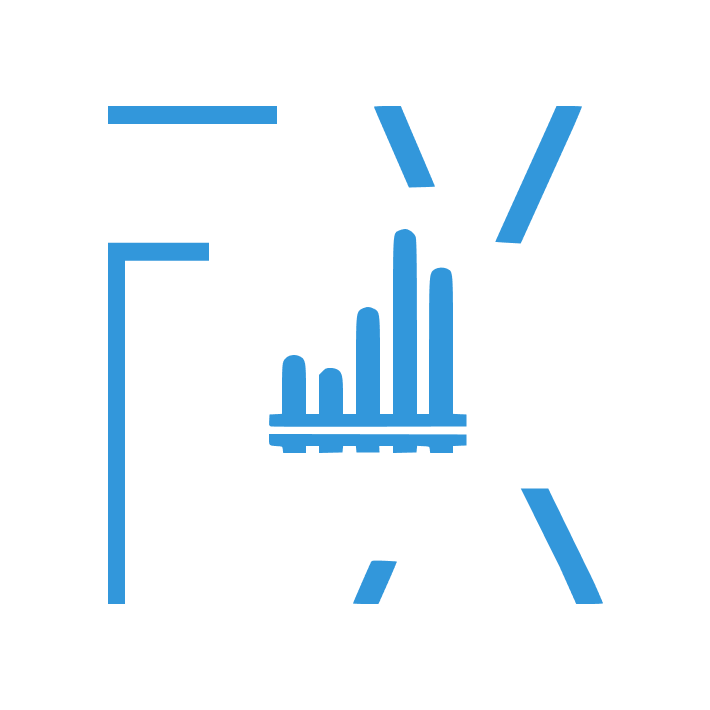How to evaluate the conditions of trade and capital growth
Article Map
Are you choosing a company for trading and investing? Many capital owners get lost on the websites of brokers and management companies (MC). They do not know what details to focus on in order not to be deceived in the future.
This material consists of two checklists. The first will help you evaluate the trading conditions of the broker: account types, set of trading instruments, commissions, leverage, deposit/withdrawal policy, etc. And the second checklist will be useful during the analysis of investment offers in the MC: the ratio of profitability and risk, the method of increasing funds, entry threshold, investment period, commissions.
Before evaluating the trading or investment conditions, it is important to determine the level of reliability of the company. As practice shows, scammers lure people with too comfortable conditions and the highest percentages of earnings. Therefore, it is always important to act in order.
As well as the license, access to exchange instruments and the correctness of interbank forex, CFD and binary options quotes are important to check to ensure the integrity of the company.
- Task number one is to check registration and regulation.
- Then it is important to assess the company's reputation: study its history and read opinions on the Internet.
- Then familiarize yourself with the risks: find the answer to the question of what could cause a complete loss of funds.
- Finally, move on to assessing the conditions: if you are looking for a broker - trading, if an investment project - capital growth.
Checklist 1. Evaluation of trading conditions on a brokerage account

1. Range of trading instruments
It is convenient and profitable to work on different markets from one account. Popular advice is as follows: the more tickers, the better.
The right decision would be to understand how the trading process takes place: on an internal platform (Dealing Desk) or with direct access to world markets (No Dealing Desk). The success of trading depends on this: mainly because DD brokers trade against their clients. Also, novice traders often do not distinguish between working with CFDs and underlying assets - it is important to learn the differences in time.
You will find the article about checking the company's access to world markets and the correctness of quotes in the terminal useful. In it, you will find information about trading instruments.
2. Types of trading accounts
Client-oriented brokers offer several accounts to choose from. Companies usually develop different packages based on strategies, markets, and transaction volumes. These accounts require a certain deposit and specified fees.
It is important to look at the content. A pseudo-broker can sometimes be identified by the account composition. In exchange for a large deposit, they offer nonsense: bonuses (which cannot be worked off later), webinars, help from personal managers, signals of unknown origin, etc.
Reminder: in Russia, there is no law on insuring funds in brokerage accounts. Before registering an expensive account, it is worth testing the service on terms for beginner traders.
3. Security tools
The best security tools are, of course, the presence of state licenses and a strong reputation in the market. An important solution is a service called “segregated account”, which is required for clients with a deposit of $50,000.
A segregated account is the storage of client funds in a bank account independent of the broker. Its registration allows you to insure against force majeure in the form of bankruptcy of the servicing company. The broker must publish the terms of renting such an account.
It is important to understand that sites that “from the start” say that 100% of client funds are stored separately from the broker’s are lying. Segregated accounts are a favorite fairy tale of scammers. The service is expensive, and it is not provided to owners of deposits in the amount of $100. Also, the broker should not advertise an SSL certificate and protection from DDoS attacks. These things are mandatory by default.
4. Leverage Size
Leverage is something that new traders react to strongly, although they should not. They expect to invest $50, multiply it by 1:1000 and make money on a position valued at $50,000. Dishonest brokers attract clients with high leverage.
Margin trading is a set of parameters that must be assessed with a cool head. 1:30 is an adequate leverage for a retail client. The Central Bank of the Russian Federation does not allow its licensees to raise it higher. 1:500 is an adequate leverage for an institutional client.
5. Margin Trading Levels
Many new traders in most cases do not know about Margin Call and Stop Out levels, although they should. They trade with leverage without understanding their obligations to the broker.
The larger the deposit, the higher the margin call and stop out. Try to choose conditions where the margin call is 20% and the stop out is 10%. Sometimes the margin call = stop out, that is, there is no warning about closing, and you need to know about this in advance.
All conditions of margin trading must be fixed in the agreement.
6. Spread size
Spreads can be fixed and floating. A broker can earn only on spreads, or on spreads and various commissions. It is important to know how the spread policy is structured, because it affects the profitability of trading.
Many traders are looking for “tight spreads” - this is normal. However, you need to understand two things. Firstly, tight spreads, as a rule, can only be seen on regular currency pairs. Secondly, tight spreads may hide draconian fees for the volume of the transaction and its opening.
7. Commissions
As already mentioned, commissions and spreads are the two main sources of income for a broker. Fraudsters “get by” on the fact that they have “everything for free”. In this case, you need to understand that the company makes money by robbing accounts.
After visiting the broker’s website and looking at the documents, you need to find out under which articles and how much you will have to pay. What types of commissions are there? Subscription fee, transaction, daily reward, % for lending, etc. You need to know all the numbers and take them into account in your strategy. Additionally, it is worth clarifying the exchange commission: it may already be taken into account, or it may not.
Important advice: do not look for low commissions, look for a reliable intermediary.
8. Terminal and execution
A client-oriented broker offers several trading programs to choose from: for example, MT4/5 and its own development. Traders get access to cross-platform solutions. The mobile application may be paid. If the broker is little known and there are no reviews about it, the presence of its own terminal, “award-winning”, should be a warning sign. Fraudsters often decorate simulators with their logos and pass them off as trading programs. Developing a real terminal requires serious investment: a company that appeared “yesterday” cannot afford it.
A valuable proposition is execution at the requested price. Slippage is becoming a rarity these days. In most cases, requotes occur with dishonest companies. To make sure there are no requotes, read reviews proactively and test the service in practice.
9. Voice instructions
It may seem that instructions by phone are a thing of the past. But no. The Internet can disappear at the most inopportune moment. In such a situation, traders are saved by telephone trading. The client calls the broker and instructs him to make a deal.
If you need voice instructions for insurance or for another reason, find out about this service. Not all brokers have it. As a rule, telephone trading requires an additional fee. Tariffs depend on the number of calls during the month.
10. Attitude to scalping
Not every broker allows scalping. If you aim to earn money with second/minute trades, you need to carefully read the agreement. This document should be found in the footer and/or in a special section. It would not hurt to ask the manager clarifying questions so that in case of misunderstanding of any provisions you do not fall under sanctions.
Brokers who allow scalping do not have a limit on the waiting time between the market price, stop loss and take profit.
11. Order Set
Orders are instructions (in other words, orders) to the broker. They help automate trading and minimize trading risks. Different brokers execute different sets of orders: some only basic ones, others also additional algorithms.
All brokers execute basic orders: market order (so-called “one-click trading”), limit order, pending stop order, stop-loss order, trailing stop order or trailing stop-loss order.
Few brokers execute non-standard orders: Good Till Cancelled (GTC), Day Order, One-Cancels-the-Other (OCO order), One-Triggers-the-Other (OTO order), etc.
It is worth studying the set of orders in advance to make adjustments to the strategy.
12. Payment methods
The advice “the more payment methods, the better” is wrong. Reliable brokers only implement bank transfers, because they are considered the safest way to move large amounts. Bank transfers also allow you to initiate a refund procedure.
Offshore brokers often offer to replenish the deposit using BTC and ETH. This may seem like a modern approach, but in fact, it is a scam. Users who are eager to trade transfer money to anonymous wallets and are subsequently left with nothing.
Before you top up your deposit, it is important to focus on the anti-money laundering (AML) policy. As a rule, such a document states that you can only withdraw to the account from which you deposited. Familiarize yourself with the AML policy in advance.
13. Rules for depositing and withdrawing funds
Ease of depositing and withdrawing funds is of utmost importance. On the broker's website, you should definitely read the table that lists the allowed currencies, possible fees, minimum amount, maximum amount, and application processing time.
Each broker has its own policy for financial transactions. Some charge a fee for processing a withdrawal request, while others do not. Some companies compensate for the fees of banking institutions, but this is rare and is more often implemented as part of promotions.
It is important to focus on the terms of withdrawal of funds. Life can be different and no one is immune from a situation when money is needed “here and now”.
14. Training
Most brokers offer free training: articles, webinars, videos, step-by-step instructions. As a rule, basic materials are available to everyone, and advanced ones are available to account holders.
Service providers also offer paid courses on various topics, help from an experienced mentor, sessions with a financial consultant. It is worth exploring all the opportunities that a potential service provider can provide. Taking courses, at a minimum, allows you to systematize your knowledge.
It is good if the broker services demo accounts. The so-called “demos” help hone your trading automation and test your strategy. You register on the company's website and receive all the instructions by email. Install the program, enter the keys and make deals with virtual dollars.
15. Support
It is convenient when support is provided “at arm's length”. And it is important that there are not random people on the line, but experts who understand the topic.
The best brokers offer several ways to contact. Hotline, call from the website, online chat, email, etc. A trial contact will help you understand how the broker treats customer service. Does the support service respond quickly or not. Can it answer questions about spreads, commissions and other conditions or not.
It is also worth finding out the working hours of the support. It is convenient when the connection is established during trading sessions.
When assessing the trading conditions on a brokerage account, it is worth focusing on the completeness of the information. Each of the 15 points of the checklist should have a full answer on the broker's website.


